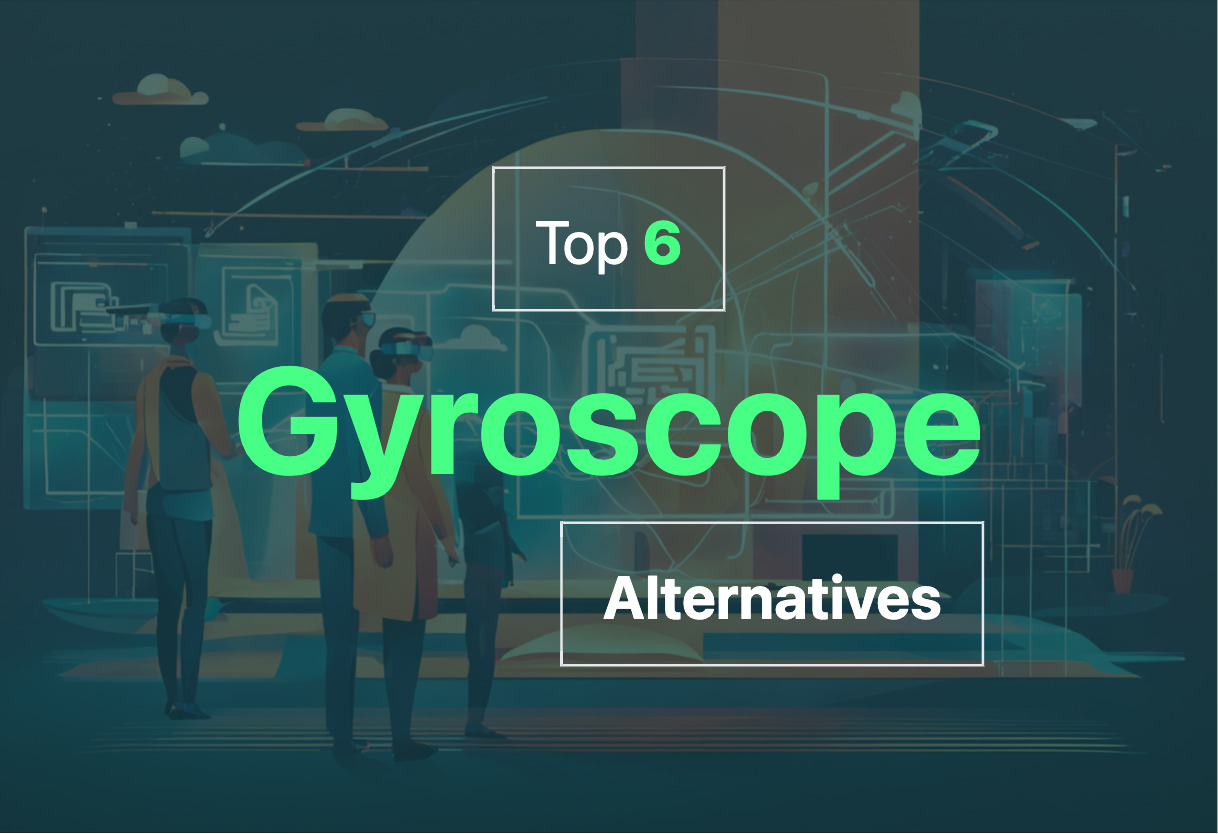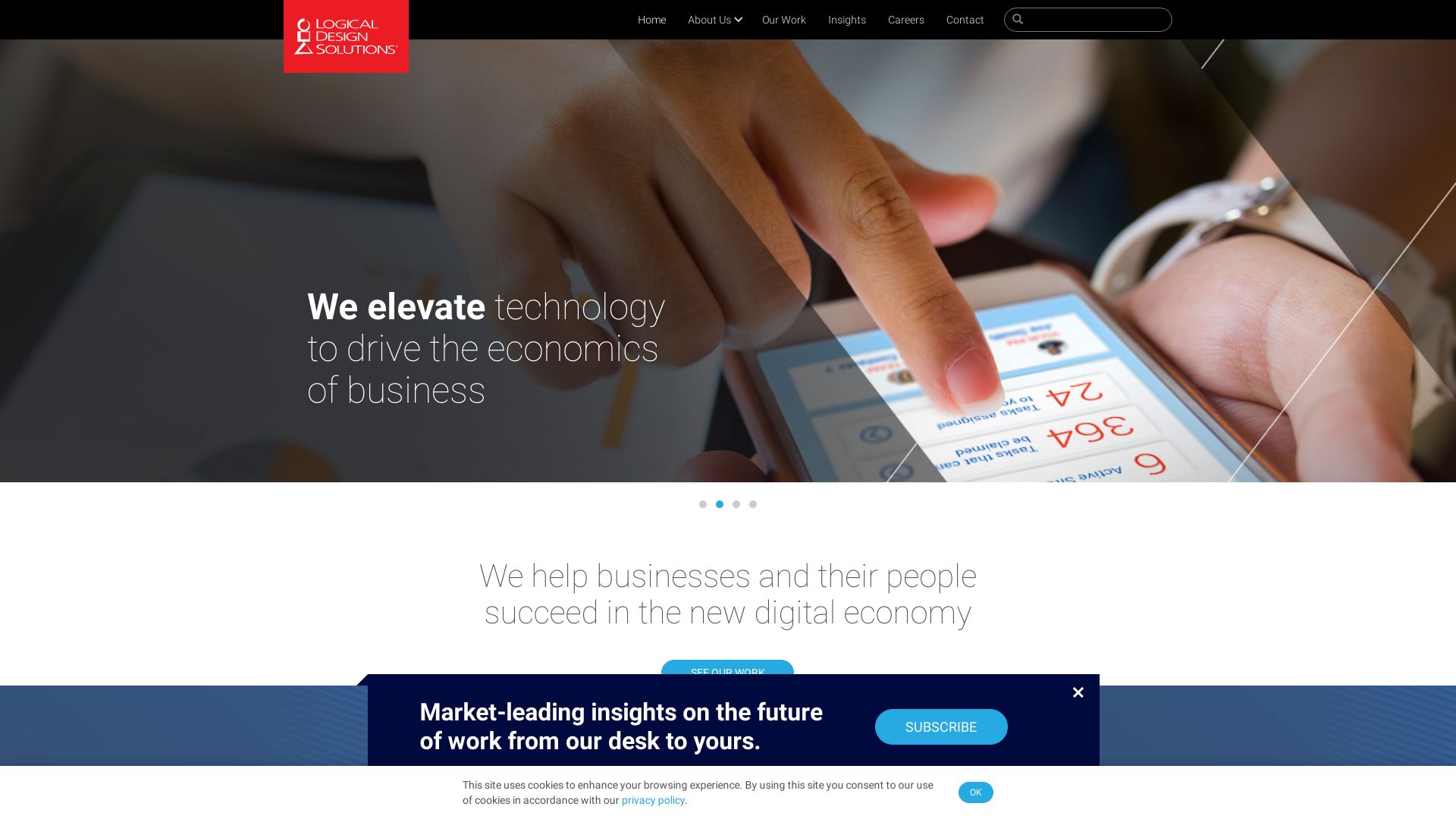Gyroscope is a pioneering company known for its gyroscopes, or angular velocity sensors, crucial in various technologies from smartphones to robotics. With a legacy dating back to John Serson’s creation of the Whirling Speculum in 1743, modern MEMS-based gyroscopes by Epson continue to push boundaries in accuracy and sensitivity.

Exploring options beyond Gyroscope, one may consider LDS, Laser, LiDAR, LiDAR SLAM, SLAM, and VSLAM among others for specific applications catering to diverse needs and preferences.
LDS

The Church of Jesus Christ Latter-day Saints (LDS) has an impressive track record of adopting and leveraging technology, from introducing telephone systems in the 1870s to launching insightful websites in the digital age. Known for its unique approach, LDS often integrates tech to facilitate broad communication, training, and content distribution.
LDS Top Features
- Early Adoption of Communication Technology: From adopting the telegraph line in 1867 to embracing the web in 1996, LDS has always been at the cutting edge.
- Strong Presence in Broadcasting: Initiated closed circuit television broadcasts in 1948 and launched KZN radio station which aired globally recognized programs.
- Content Distribution in Multilingual Formats: Utilized digital technology like CDs and DVDs to distribute content in 27 languages.
- Interactive Web Presence: Deployed numerous sites to communicate church doctrines and facilitate religious learning.
- Technology in Missionary Applications: LDS leverages tech to enhance their missionary applications and youth outreach
| Feature | Benefit |
|---|---|
| Early Tech Adaptation | Aids in efficient internal and external communication |
| Broadcasting Presence | Influential global reach and content delivery |
| Interactive and Evangelical Websites | Provides resources for teachings and explaining church doctrines to the masses |
LDS Limitations
- Internet Dangers: Church leaders warn of the stifling effects of cyberspace and potential perils like pornography, cyberbullying, and malicious software.
- Limited Interactive Components: Despite an extensive web presence, the interactivity of some sites could be enhanced.
LDS Pricing
As part of the Church’s initiative to promote teachings and doctrine, LDS tech implementations are generally free-of-cost and accessible to the public.
LDS Use Cases
Use case 1: Religious Education
The LDS tech platforms, from web content to DVDs, offer teachings in multilingual formats for believers to gain in-depth religious knowledge.
Use case 2: Missionary Applications
Leveraging technology, LDS can streamline missionary applications, enhancing the effectiveness and reach of their mission.
Use case 3: Family Safety
By educating and informing on safe tech use, LDS helps families navigate the digital world securely.
Laser
Laser, an abbreviation of Light Amplification by Stimulated Emission of Radiation, is a high-tech tool that originated from the early 1900s theories and advancements by Albert Einstein, Valentin Fabrikant, and others. It has transcended through decades, broadening its application in various sectors, including medicine, retail, cosmetics, transportation, and more.
Laser Top Features
- High Peak Power: Lasers, especially the Ruby laser, possess powerful beams making them ideal for drilling and cutting hard materials like diamonds.
- Efficiency and Cost-Effective: Thanks to Kumar Patel’s invention at AT&T Bell Labs in 1963, lasers have become more efficient and wallet-friendly over time.
- Versatile Applications: From industrial assembly lines to therapeutic medical procedures, lasers have found a home in diverse fields.
- Promising Future: The continuous evolution of laser technology, especially in quantum theory and the flashlight maser, indicates an enormous growth potential.
| Laser Type | Specific Application |
|---|---|
| Ruby Laser | Primarily used in military range finders and diamond drilling. |
| CO2 Laser | Favored for laser materials processing due to improved efficiency. |
| Industrial Lasers | Enables drilling, cutting, or welding metals on industrial assembly lines. |
Laser Limitations
- Hazardous: If mishandled, lasers can be potentially dangerous, causing skin burns or eye injuries.
- Regulatory Requirements: Laser technology use might subject one to various regulatory constraints and safety guidelines.
- Cost: Despite the evolution, certain lasers, particularly those of high power and precision, can be costly.
Laser Pricing
While specific pricing isn’t provided, it’s important to note that costs often vary based on the type, power, and application of the laser technology.
Laser Use Cases
Use case 1: Medicine
Laser technology is extensively utilized for various surgical procedures and therapeutic applications, offering a less invasive approach compared to traditional techniques.
Use case 2: Industrial Application
With industrial lasers, the manufacturing process is revolutionized, enabling precise cutting, drilling, and welding of metals.
Use case 3: Data Transmission
Lasers also play a significant role in information technology, spearheading data transmission through optic fibers for fast, high-capacity, and secure communication.
LiDAR
A thriving authority in Augmented Reality tools, LiDAR – Light Detection and Ranging technology – has been illuminating the path to pioneering innovations for over half a century.
LiDAR Top Features
- Epitome of precision in mapping positions and distances.
- Adept in object detection, bolstering its integity in obstacle tracking.
- Exhibits mastery in 3D imaging using time of flight sensing and pulsed lasers.
- Emerges superior to Radar, courtesy of its significantly greater accuracy.
- Purposefully employed for autonomous vehicles, optimizing flash technologies and scanning laser beams for space measurements.
| Broad Dynamic Range | Employs sensor compensation to pulsed laser or light levels over a broad dynamic range. |
| Use in Automation | Offers central technology for automation applications. |
| Scanning LIDAR sensors | Hokuyo provides scanning LIDAR sensors, aiding in precision mapping and traffic monitoring. |
LiDAR Limitations
- In steep, forested areas, accuracy might fall within a range of 1 to 2 feet.
- The technology’s performance is dictated by the power and wavelength of the laser.
LiDAR Use Cases
Use Case 1 – Driverless Cars
LiDAR technology has been a catalyst in the advancement of driver-assisted cars, notably contributing to its increasing deployment in autonomous vehicles since 2005.
Use Case 2 – Consumer Electronics
Championing the role of AR in consumer products like the iPad Pro and iPhone 12 Pro, LiDAR has aided in enhancing imaging technologies.
Use Case 3 – Geological and Oceanographic Studies
LiDAR’s accuracy and precision in mapping have found extensive use in fields like geology and oceanography, as well as construction and architectural planning.
LiDAR SLAM
Born of a partnership between Data61, the tech arm of Australia’s national science agency, and 3D Laser Mapping, LiDAR SLAM has revolutionized simultaneous localization and mapping (SLAM) systems. Marrying laser technology with constant position calculation, LiDAR SLAM creates highly robust and accurate 3D maps.
LiDAR SLAM Top Features
- Continuous-time SLAM: Frequent position calculation, essential for accurate laser scanning
- GeoSLAM Beam: Next-generation SLAM algorithm offering robust and reliable mapping regardless of environment
- GeoSLAM Connect: Tailors SLAM processing for optimal efficiency in each unique capturing environment
- Semantics addition: Furtherance of autonomy by identifying specific objects and humans
| Feature | Benefits |
|---|---|
| Easy georeferencing of data | Improves mapping accuracy and ease of data read |
| Outperforms GPS-based systems in indoor spaces and urban areas | Offers advanced spatial mapping for blocked signal environments |
| Mobile system | Removes the need for static, bulky tripod setups |
LiDAR SLAM Limitations
- Hardware dependency: Quality of SLAM technology could be influenced by the quality of the sensor
LiDAR SLAM Use Cases
Use case 1: Autonomous Vehicles
LiDAR SLAM enables autonomous vehicles to create comprehensive and accurate maps of the physical world, enhancing their orientation and localization capabilities.
Use case 2: Robotics
Robots in warehouses and homes benefit from the map-making feature of SLAM, allowing them to perform seemingly complex tasks like navigating around furniture or inventory autonomously.
Use case 3: Geospatial Analysis
The precision and robustness of LiDAR SLAM’s mapping capabilities make it influential in areas of aerial surveying and geospatial research, offering superior topographical data in comparison to traditional methods.
SLAM
SLAM, or Simultaneous Localization and Mapping, is a method utilized in autonomous vehicles to build a map while also localizing the vehicle in real time. It is a growing technology due to its versatile uses and advancements in computer processing speed and low-cost sensor availability.
SLAM Top Features
- Use of sensor signals: SLAM algorithms process a vast volume of data from sensors like cameras and laser range finders.
- Two Adaptations: Visual SLAM combines camera resources while Lidar SLAM leverages laser sensors for precise measurement.
- Loop closure problem countering: It relies on landmark recognition and pose graph construction to minimize localization errors.
- Increased Efficiency: GeoSLAM’s SLAM system gathers data while scanning and gives real-time feedback, reducing the need of multiple static setups of tripods.
| Components | Function |
|---|---|
| Sensor Signal Processing | This frontend process helps in mapping obstacles in real-time by processing data from sensors. |
| Pose-Graph Optimization | The backend process assists in perfecting the display of the vehicle’s current position on the map. |
| Parallel Processing | This reduces computational cost associated with image processing and optimization. |
SLAM Limitations
- Accumulating Localization Errors: With deviations known as the loop closure problem, errors can add up leading to significant discrepancies from actual position.
- High computational cost: Image processing and mapping optimization can be computationally demanding.
- Environment Dependent: The choice of SLAM algorithm depends on environmental conditions and expected output, which may not always be predictable.
SLAM Use Cases
Home Robot Vacuums
SLAM technology proves crucial in home robot vacuums, minimizing manual intervention and predicting optimization paths for efficient cleaning.
Mobile Robots in Warehouses
SLAM’s precise mapping capabilities assist mobile robots maneuver safely in warehouses, avoiding obstacles and managing tasks efficiently.
Self-Driving Cars
SLAM helps in real time localization and mapping for self-driving cars, forming its cognitive system to understand and interact with its environment.
VSLAM
VSLAM, also known as Visual Simultaneous Localization and Mapping, is a powerful algorithm deployed in autonomous vehicles, notably providing efficiency in mapping and localizing simultaneously. Its capabilities originate from a broad spectrum of regulating algorithms.
VSLAM Top Features
- Integrates sensor signal processing for front-end operations and pose-graph optimization for backend tasks.
- Employs monocular SLAM utilizing a single camera for effective landmark identification and mapping.
- Includes two key algorithm categories: sparse methods (PTAM, ORB-SLAM) and dense methods (DTAM, LSD-SLAM, DSO, SVO).
- Compatible with LiDAR SLAM for laser precision in mapping applications.
| Feature | Benefit |
|---|---|
| Multi-sector adaptation | Presents a wide application scope, with revenue projections reaching $18B by 2027. |
| Static and dynamic environment mapping | Offers flexibility for use in varied conditions. |
| Advanced industrial applications | Complements wide-ranging uses like autonomous forklifts and excavators. |
VSLAM Limitations
- A firm hurdle includes error accumulation in localization and location failure.
- Increased computational cost with high image and point cloud processing.
- Challenges persist in clean mapping and operating in multi-robot instances.
VSLAM Pricing
VSLAM’s pricing specifics may vary based on its integrated use in multiple devices, systems or sectors.
VSLAM Use Cases
Use case 1: Robotic Applications
VSLAM exhibits proficiency in guiding robots in various settings, including autonomous vacuum cleaners and warehouse robots.
Use case 2: Entertainment
Companies such as Disney utilize SLAM technology to create immersive experiences, for instance, the Virtual World Simulator.
Use case 3: Medical Field
SLAM assists in surgeries and medical explorations, contributing to precision and accuracy in such delicate operations.
Logan Bellbrook
Content writer @ Aircada with a knack for nature & AR/VR/XR. Blogging the intersection of tech & terrain.





